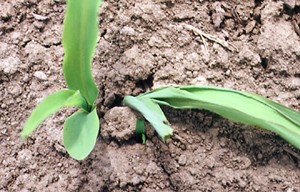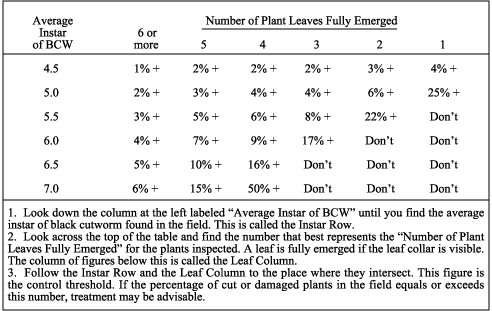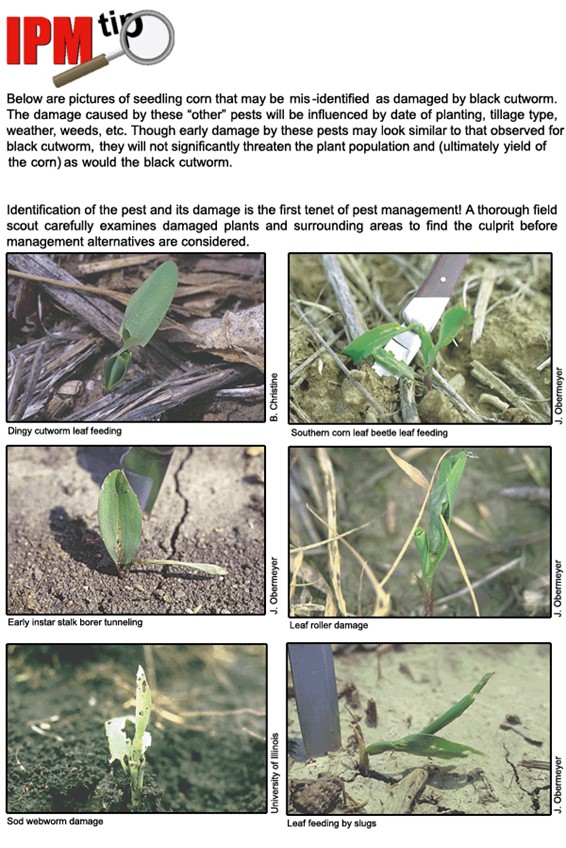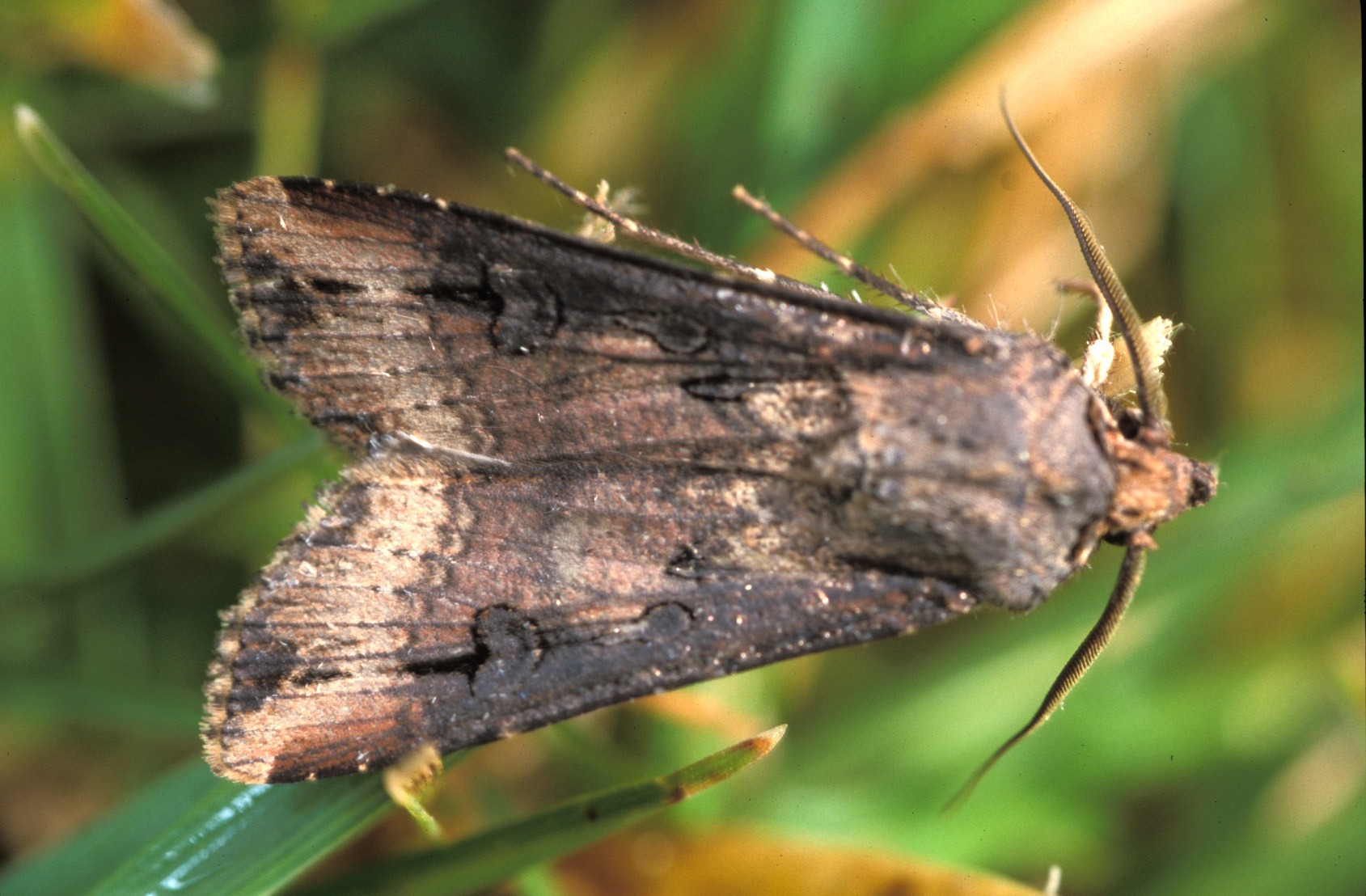Black CutwormS (Corn)
Agrotis ipsilon Hufnagel
Search the Pest & Crop Newsletter

The ability to see these full-sized life-cycle images is currently disabled to resolve an issue.
Related Video Resources:
Appearance and Life History
Several cutworm species attack corn in the Midwest. Of these species, the black cutworm poses the most serious threat to field crops.
The black cutworm moth has a dark, dagger-shaped marking near the outer edge of each forewing. The inner two-thirds of the forewing is dark, while the outer one-third is much lighter in color. Its hind wings are light in color with a brown tint along the margins.

Photo by J. Obermeyer
Black cutworm larvae vary in size from 1/8 inch (3 mm) when newly hatched to 2 inches (50 mm) when fully grown. They are light gray to almost black in color and have a greasy appearing texture and coarse granules, “bumpy,” of various sizes that can be seen on their skin with magnification.
Moths overwinter in Texas and Mexico and arrive in the Midwest from late February through June. They are attracted to early spring vegetation, such as winter annual weeds, where mating and oviposition take place. The moths are active at night and prefer to deposit their eggs on low-growing, dense vegetation. Risk factors that increase the likelihood of black cutworm attacks include a field corn following soybeans, late planted, or minimum tillage.
Damage

Photo by S. Dlugosz
Larval infestations usually appear first in formally weedy areas of fields. Newly hatched larvae feed on weeds and then young corn plants if present, leaving small irregular holes in the leaves. Such early feeding is of little significance to plants, but these signs are good indicators of the potential for severe damage by later cutworm instars.
Larger larvae may notch the stems of seedlings immediately below the soil surface, which can cause plants to wilt and die. They may completely cut through stalks, which can result in severe stand reductions.
Black cutworms usually feed at night or during overcast days. They sometimes drag cut plants under dirt clods or into small holes in the soil to continue their feeding during the daylight hours.

or into small holes in the soil to continue their feeding
Photo by C.R. Edwards
Sampling Method
- Fields with pre-plant weeds are at highest risk and should be prioritized for sampling at crop emergence.
- To help with scouting visits and prediction of cutworm damage, check recent moth monitoring and larval developmental predictions provided by many state Cooperative Extension Services.

- Scouting:
- Walk throughout fields shortly after plant emergence checking plants for signs of black cutworm feeding (leaf damage, wilted plants, or cut stalks).
- Look for indications of other early season pests, such as wireworms, white grubs, corn flea beetle, etc.
- Watch for cutworm damage during May and early June field visits.
- If black cutworm damage is observed, sample the field immediately to make an accurate assessment of the threat posed by the larvae.
- Sampling:
- 5 areas of a field, 20 consecutive plants (total of 100 plants for the field).
- Count and record the number of plants cut or damaged by black cutworms within each sample set. Determine the percentage of infested plants by adding together the number of cut or damaged plants from each set of 20 plants.
- Determine the average stage of growth of the corn. Count and record the number of fully unrolled leaves on the 19th and 20th plant in each of the 5 sets of plants. The collar of the leaf is visible on a fully unrolled leaf. Determine the average number of fully unrolled leaves per plant by adding together the number recorded for each of the 10 plants and divide the sum by 10.
- During the plant inspection process, collect at least 10 larvae if you wish to confirm the species identification. Drop collected cutworms into a small jar of alcohol.
Management Guidelines
Primarily Leaf Feeding – Control may be needed if 3% to 5% of the plants show leaf feeding and 2 or more cutworms can be found per 100 plants. Cutworm control is generally more effective at this time.
Stalk Damage – This table is based on cutworm feeding slightly above or below the soil surface, and may not work if the soil is dry and the cutworms are feeding 1/2 inch (13 mm) or more below soil surface.



